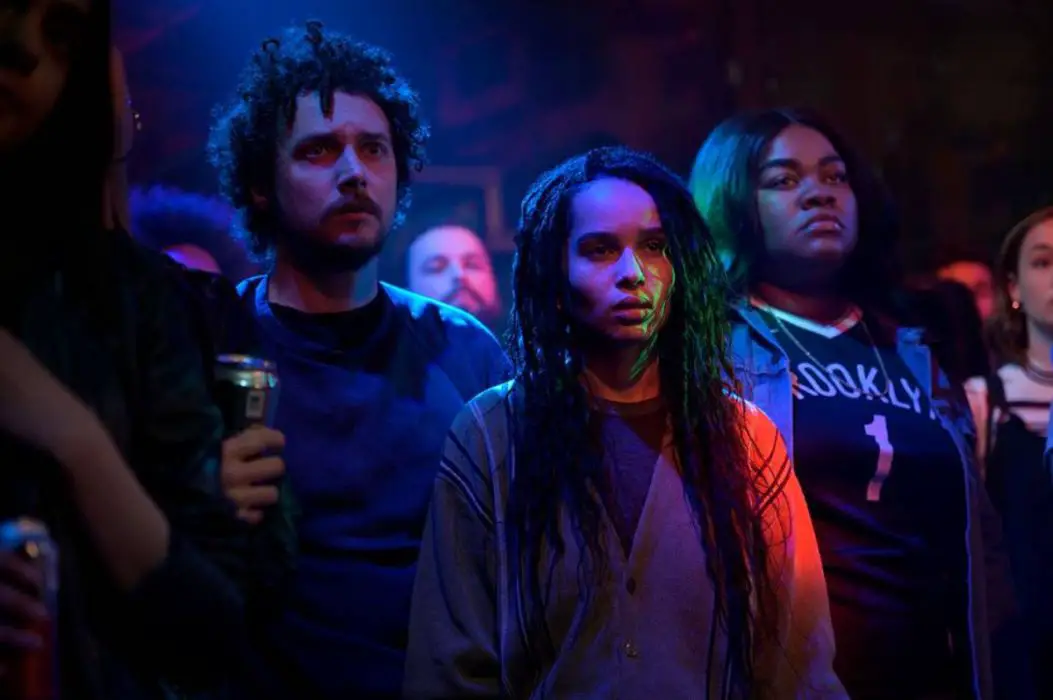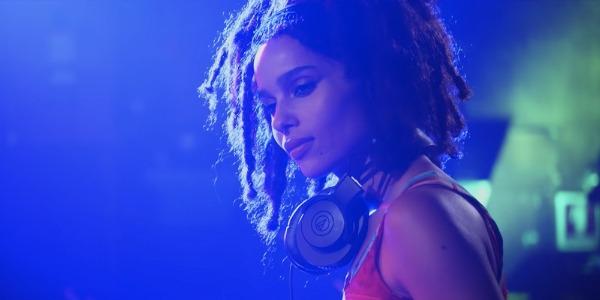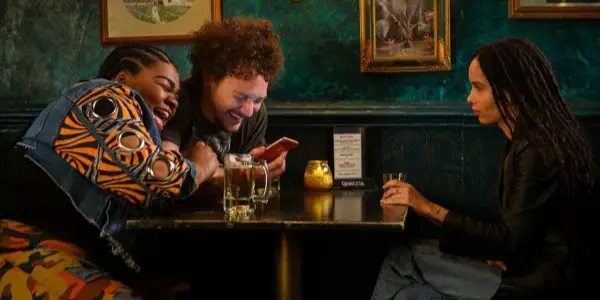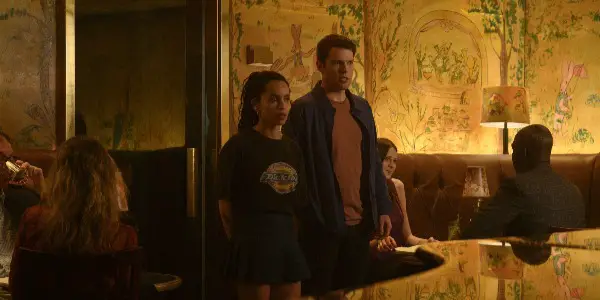HIGH FIDELITY Season 1: A Playlist Of Heartbreak & Self-Improvement

Reyzando Nawara is a passionate film and TV enthusiast from…
Relationships are always hard. It takes a lot of effort to maintain. And sometimes, it can drain you emotionally, mentally, and even physically. On top of that, when you’re in a relationship, you’re also expected to always have one foot out the door and be ready to get your heart broken in case things don’t work out as you’ve imagined. Yes, finding the right person to spend your life with is incredibly difficult. But it doesn’t mean that it isn’t worth it. If anything, it is these challenges that actually make relationships so rewarding.
This complexity of navigating the highs and lows of relationships has always been central in Nick Hornby‘s 1995 book High Fidelity, as well as its 2000 faithful film adaptation by Stephen Frears. Starring John Cusack as a manchild, music aficionado who’s trying to win back his ex’s heart while reflecting on his top five most heartbreaking break-ups to make sense why he’s always doomed to be rejected, High Fidelity the film shows us that like music, love is universal and that everyone, even those as obnoxious as Rob, deserves some love in his life. Though this is also one of the main themes in the Hulu series adaptation created by Veronica West and Sarah Kucseerka, the 10-episode half-hour show manages to give refreshing touches by swapping the gender of the protagonist and replacing the Chicago setting to the Crown Heights section of Brooklyn.
More Than Just A Gender-Swap Remake
The gender-flip, however, isn’t just done to make the series different than its predecessors. That the replacement for Cusack’s Rob, who was a cis straight, white male, is a biracial and sexually fluid female, also gives the show a new perspective that is far more tender and nuanced. When we first meet this new Rob — short for Robyn Brooks — (Zoë Kravitz in her best role to date) in the season premiere, she’s hardly moved on from her recent relationship with Mac (Kingsley Ben-Adir), even though their break-up had happened nearly a year ago. She wallows herself in cigarettes and sad playlists. And when she’s not busy being such a mess, she’s running her record store Championship Vinyl with two of her closest confidantes Simon (David H. Holmes in an understated performance), who is the equivalent of Todd Louiso’s Dick from the film, and Cherise (the scene-stealer Da’Vine Joy Randolph), the equivalent of Jack Black’s Barry.
Rob eventually tries to force herself back into dating with an awkward, sweet guy named Clyde (Jake Lacy, in trouble of getting typecast as romcom’s go-to nice guy). But in the end, the pain of her heartbreak along with the reappearance of Mac takes control of her life once again. In an attempt to make sense of why she’s never succeeded in having relationships, this Rob, like the previous one, is determined to revisit her top five most significant exes so that she knows what she always did wrong.

The first half of the season is spent on Rob’s journey as she makes sense of herself through the perspective of her exes, just like what both the original book and film illustrate. But where the film mostly focuses to demonstrate that even though Rob is a jerk, he still deserves a chance at love, the series smartly utilizes Rob’s journey to observe how oftentimes, when we’re in a relationship, we’re able to transform ourselves into a new person — could be better or worse, depends on whom we’re having the relationship with. It’s through this journey that the show delicately opens Rob’s vulnerabilities, allowing us to understand why she did what she did without ever once discrediting the parts that make her unpleasant.
On top of that, the gender-swap also allows the tone of the story to be a lot more complex and humane. In the movie adaptation, Rob remains entitled until the end of the movie, and the primary goal of his adventure to revisit his exes is simply about him trying to get the validation that he’s actually not doomed to be rejected and that he deserves another shot with Laura. But in the series, Rob’s journey is more about her finding closure and peace on things that have been weighing on her mind anytime she’s in a relationship with someone else. Much of this happens because by simply shifting the male gaze into the female one, the show, though carrying the same DNA of Frears’ film, can add a new point of view about how women’s complexity and emotional intelligence that is rarely found in men can affect the way relationships work.
Finding the Rhythms of Modern Romance
The show also benefits from the setting shifts. In the movie, Rob’s record store is located in Chicago, and it doesn’t really add much to the story. But in the series, the store is located in Brooklyn, which gives the story more room to discuss relevant issues such as gentrification and how it affects small businesses. Though it is not central to the main plot, this context gives a new layer to Rob’s store Championship Vinyl, whose presence has always been integral to the book. But most of all, it is the shift from the 2000s to 2010s that adds more millennial texture to the way the show views relationships.

Right from the very first episode, social media is omnipresent in the show, underlining the idea that in this modern era, relationships are highly affected by it. When Rob is about to embark on her journey of revisiting her exes, she uses social media to track them. Heck, she even uses social media to stalk Mac’s new fiancé, Lily, in which she only finds photos of sunsets, flowers, and frosés in her feed. Where the movie Rob is driven by his own insecurity and imagination to get back to Laura, the series Rob, on the other hand, is getting anxious by a bunch of photos she finds on Instagram, a place where people can mask their true selves using pretty snapshots. These modern-day details could easily go unnoticed in other lesser shows, but in High Fidelity, not only does it kickstart the plot, but it also gives richer layers to both the characters and the story.
Right now, we live in a world and in an era where social media has become the first and last thing that we see every day. Every aspect of our lives, including relationships, now depends and is affected by it. Though indeed, social media can bring two people closer, it can also hurt the connection that we’ve built in real life. High Fidelity emphasizes this concept by simply depicting how modern relationships are inseparable to social media, displaying both the merits and drawbacks that come from it while reflecting the new normal of dating in this modern era.
A Heart-Lifting Ending
The updates do not just happen because of the gender-flip and setting-swap, but also because the show successfully expands its original source. Unlike the movie whose endgame revolves around whether Rob and Laura will get back together or not, the series is far more interested in Rob’s evolution as a person after she goes on a personal odyssey to make sense of her heartbreak. In the second half of the show and after knowing the reasons why she’s doomed to be rejected, Rob is more open and more self-aware of what she’s been doing wrong throughout her relationships with her exes. And due to this new awareness, Rob is finally able to learn how to let go and be less self-centered. She tries to fix her relationship with her friend Cherise, and even tries to take the risk of getting hurt again by putting herself out there and giving another shot at dating Clyde, even though in the end it’s all too late.

But that doesn’t matter though. The whole purpose of the story is not about whom Rob will date again in the end. What matters is that Rob finally embraces her flaws and vulnerability while trying to not to be afraid to reinvent herself after a series of heartbreaks. So in that regard, by giving a canonical ending, High Fidelity gives a whole new meaning to Hornby‘s novel while also honoring it at the same time.
Like life, relationships require a lot of hard work. And sometimes it’s much easier to not have it. But if there’s one thing that Rob teaches us is that we can always find something meaningful from it regardless of how painful the experience might get.
What do you think of this remake? Do you like the ending? Let us know in the comments!
High Fidelity is available to stream on Hulu.
https://www.youtube.com/watch?v=r5bkbfdVzbI
Does content like this matter to you?
Become a Member and support film journalism. Unlock access to all of Film Inquiry`s great articles. Join a community of like-minded readers who are passionate about cinema - get access to our private members Network, give back to independent filmmakers, and more.
Reyzando Nawara is a passionate film and TV enthusiast from Indonesia. When he's not watching TV and movies, he likes to cook and make sorbet.













